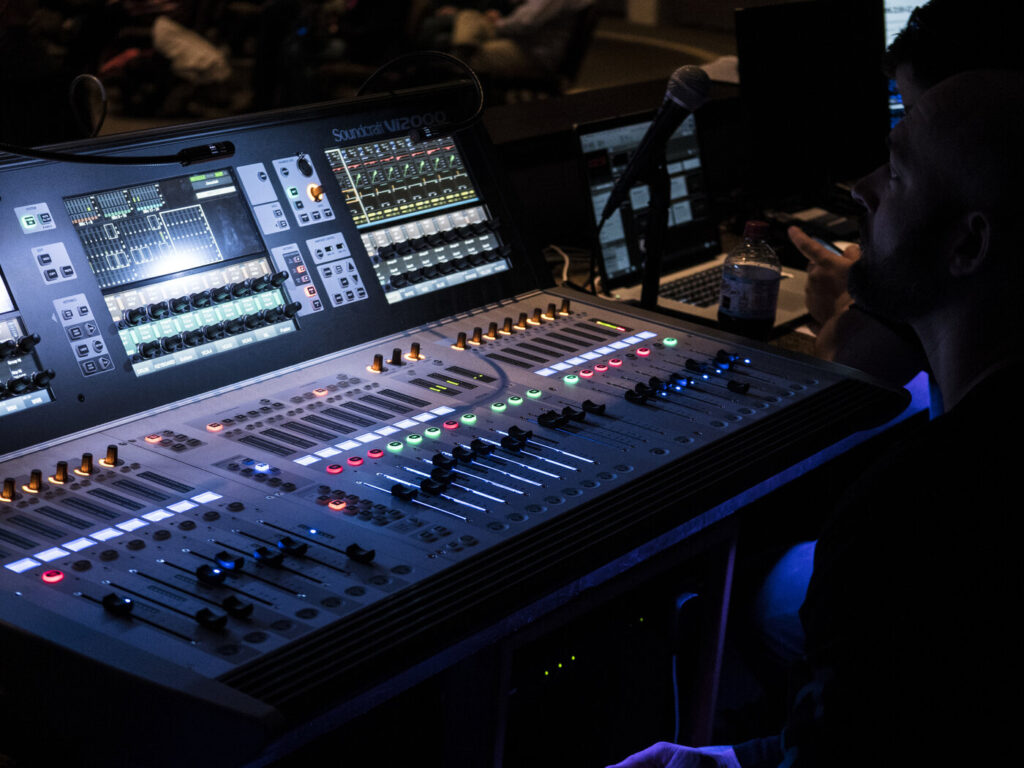The quality of a church’s audio system plays a crucial role in the worship experience for any congregation. From delivering clear and powerful sermons to leading uplifting songs, a well-managed audio system ensures that every attendee can immerse themselves in the act of worship without distraction. Therefore, understanding how to operate your church’s audio system effectively is essential for maintaining an engaging and inspiring worshipful environment.
In this article, we present eight must-know tips for managing your church’s audio system, helping it sound its best during worship services and other events. Whether you’re a seasoned audio technician or a passionate volunteer looking to improve your skills, these insights will provide valuable guidance on volume control, proper microphone usage, mixing techniques, and more.
Stay tuned as we dive into these helpful tips that will ensure your worship services’ audio quality matches the importance of your ministry’s message.
Tip 1: Invest in Quality Equipment and Regular Maintenance
To lay the foundation for effective audio management, invest in high-quality equipment and ensure regular maintenance. Utilizing reliable audio gear, such as mixers, speakers, microphones, and cables, will provide a significant advantage in achieving superior sound quality during your worship services.
Additionally, establish a consistent maintenance schedule to inspect, clean, and repair your audio equipment as needed. This practice will ensure that your gear remains in optimal condition and reduce the likelihood of unexpected failures during performances. Partnering with an experienced AVL service provider like Messenger AVL, serving churches in Georgia and other areas, guarantees professional support in equipment maintenance and troubleshooting.
Tip 2: Focus on Volume Balance Across All Elements
One of the most critical aspects of audio management is creating a well-balanced mix, ensuring that all elements, including vocals, instruments, and spoken words, are heard clearly and harmoniously. To achieve an ideal volume balance, actively listen to each audio element and make necessary adjustments using your mixing console.
Regularly monitor the overall volume throughout your service and adjust levels as required. Be mindful of sound variations that can occur between different music styles and during spoken segments. By maintaining a balanced volume, your congregation will experience a more immersive worship service, with every word and note resonating clearly.
Tip 3: Master Microphone Techniques
Proper microphone usage significantly impacts the clarity and quality of your audio output. Understanding the correct techniques for positioning, holding, and using microphones will help prevent audio feedback, distortion, and other unwanted issues during your worship services.
Ensure that all vocalists and speakers are using microphones correctly, and advise them to maintain a consistent distance from the mic. Opt for directional microphones for individual speakers or singers to minimize background noise and emphasize their voices. Additionally, invest in quality wireless microphones for flexibility and mobility during performances, enabling your worship leaders and speakers to engage more dynamically with the congregation.
Tip 4: Utilize Audio Processing Tools
Achieving the best sound quality requires more than just effective volume control and microphone techniques. Take advantage of audio processing tools on your mixing console, such as equalization (EQ), compression, and reverb, to enhance and shape the sound of each audio element.
Understanding how to properly apply these audio effects will enable you to emphasize specific frequencies, control dynamic range, and create a sense of spatial depth, ultimately producing a polished and professional mix for your worship services. Consider seeking expert advice or training from a trusted AVL partner like Messenger AVL to maximize the potential of your audio processing tools.
Tip 5: Monitor Sound Consistently
Monitoring the sound throughout your worship space is crucial for maintaining consistent audio quality. Utilize in-ear monitors and stage monitors for performers and speakers, allowing them to hear themselves and adjust as needed during the service. By providing effective monitoring solutions, you ensure that everyone on stage can perform confidently and cohesively.
In addition, assign a dedicated audio technician to actively listen and fine-tune the mix during the service. By constantly monitoring the sound, your tech team can make real-time adjustments and address any audio issues that arise, preventing potential disruptions to the worship experience.
Tip 6: Manage Stage Noise and Acoustics
Controlling stage noise and optimizing the acoustics of your worship space is vital for a seamless audio experience. Aim to minimize unwanted noise from instruments, fans, or other sources on stage, and consider using sound-absorbing materials like baffles or curtains to limit the impact of these noises on your overall mix.
Furthermore, address any acoustic challenges within your worship space, such as echoing or reverberation, by installing acoustic treatment solutions like panels or diffusers. This will help direct sound appropriately and reduce acoustic interference, creating a more immersive audio experience for your congregation.
Tip 7: Prioritize Communication and Training
Effective collaboration among your worship team, speakers, and audio technicians is vital for consistently delivering high-quality audio. Establish clear communication channels, including pre-service meetings and ongoing training sessions, to ensure everyone involved understands their role and responsibilities in managing and optimizing the church’s audio system.
Quality training ensures that your tech team remains proficient in operating your audio equipment, staying up-to-date with the latest techniques, and best practices to provide an exceptional worship experience. Messenger AVL offers comprehensive training and support services, ensuring that your church’s audio system is managed to its full potential by a skilled team.
Tip 8: Learn From Audience Feedback and Experience
Lastly, never underestimate the value of feedback from your congregation. Encourage your attendees to share their thoughts regarding the quality of your worship service’s audio. This feedback can be invaluable in identifying areas for improvement and ensuring that your audio management efforts are resonating positively with your audience.
By following these eight essential tips, you can elevate your church’s audio system management and deliver a captivating, inspiring worship experience for your congregation. With the right equipment, techniques, and support from a trusted AVL partner like Messenger AVL, your audio system will empower your ministry’s message and create lasting connections with your community.
Enhance Your Worship Experience With Expert Audio System Management
Effectively managing your church’s audio system is essential for creating a captivating and immersive worship experience for your congregation. By implementing these eight essential tips, you can elevate the sound quality, clarity, and balance of your audio system, ensuring your worship services resonate deeply with the congregation and empower your ministry’s message.
Messenger AVL’s expertise in audio, video, and lighting solutions, coupled with comprehensive training support, makes them the perfect partner for your church’s AVL needs. Serving churches in Georgia and other areas, Messenger AVL is prepared to assist you in mastering these audio management techniques, and they are proud to contribute to your church’s ongoing success and growth.
Why not take the first step towards enhancing your worship experience and achieving exceptional audio quality? Reach out to the professional AVL team at Messenger AVL and discover how their church audio services can elevate your church’s audio management, benefiting your worship services and engaging your congregation.



